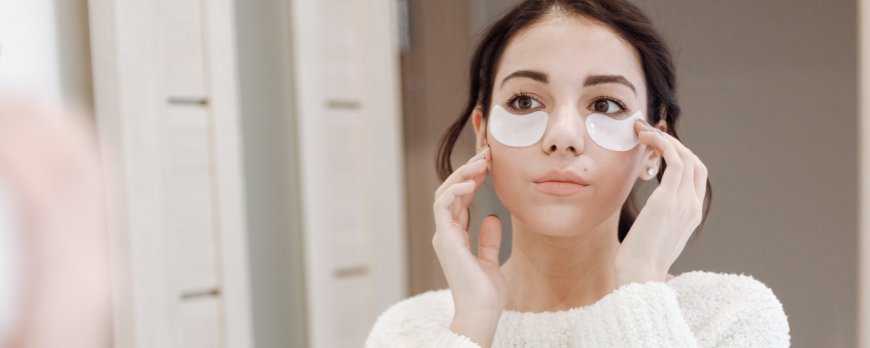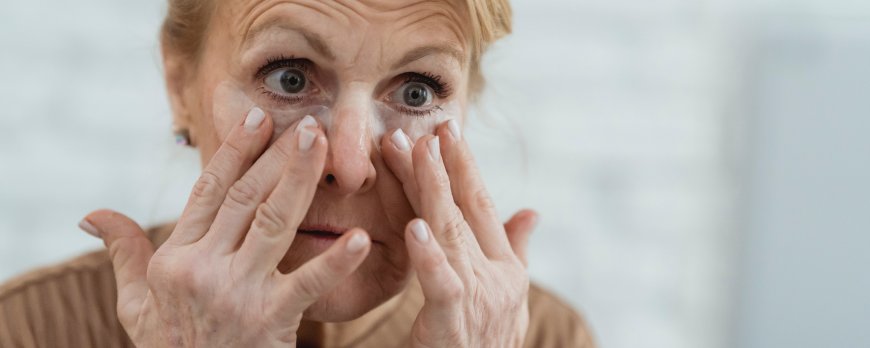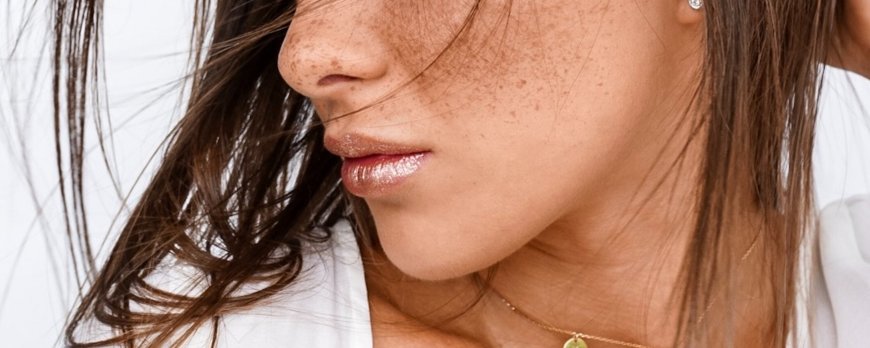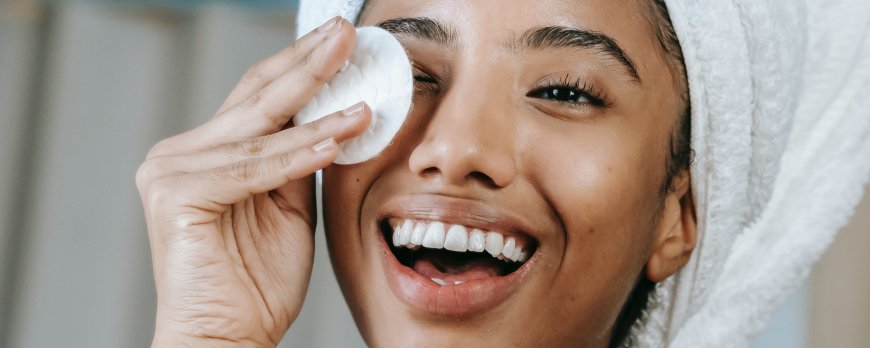What makes a face look older or younger?
Explore 'What makes a face look older or younger?' Discover the science behind aging and youthfulness, understand skin changes and how lifestyle affects it.

What makes a face look older or younger?
As we age, various factors can influence how our face looks, causing it to either appear older or younger. Loss of muscle tone, thinning skin, and a decrease in the underlying layer of fat can contribute to a flabby or drooping appearance. Additionally, dryness of the skin can result in a loss of plumpness and smoothness. Sun exposure and smoking can accelerate the development of wrinkles and dark spots on the face. Changes in the mouth, such as missing teeth and receding gums, can make the lips appear shrunken. Loss of bone mass in the jaw can make certain facial features more pronounced. Other signs of facial aging include gray eyebrows and eyelashes, sunken eyes, drooping eyelids, and a grayish-white ring on the outer surface of the eye. It is important to understand these factors in order to better appreciate the changes that occur as we age.
Key Takeaways:
- Loss of muscle tone and thinning skin can contribute to a flabby or drooping appearance.
- The decrease in the underlying layer of fat and dryness of the skin can result in a loss of plumpness and smoothness.
- Sun exposure and smoking can accelerate the development of wrinkles and dark spots on the face.
- Changes in the mouth, such as missing teeth and receding gums, can make the lips appear shrunken.
- Loss of bone mass in the jaw can make certain facial features more pronounced.

Factors that Contribute to Facial Aging
Loss of muscle tone, thinning skin, and the reduction of fat beneath the skin all play a role in the aging process of the face. As we age, the muscles responsible for keeping our skin firm and taut become weaker and less efficient, resulting in a sagging or drooping appearance. Additionally, the skin itself becomes thinner and more fragile, making it more susceptible to wrinkles and fine lines. The underlying layer of fat that provides the face with a youthful plumpness also diminishes over time, causing the skin to lose its smoothness and volume.
Sun exposure and smoking, two common lifestyle factors, can also contribute to facial aging. Ultraviolet (UV) rays from the sun can damage the collagen and elastin fibers in the skin, leading to the development of wrinkles, dark spots, and an uneven complexion. Smoking, on the other hand, reduces blood flow to the skin, depriving it of necessary oxygen and nutrients, which accelerates the aging process and can result in a dull and lifeless complexion.
Changes in the mouth and jaw area can also significantly impact the overall appearance of the face as we age. Missing teeth and receding gums can cause the lips to appear shrunken and the jawline to lose its definition. Additionally, the loss of bone mass in the jaw can lead to a more pronounced forehead, nose, and mouth, further contributing to an aged appearance.
Other signs of facial aging include gray eyebrows and eyelashes, sunken eyes, drooping eyelids, and the appearance of a grayish-white ring on the outer surface of the eye. These changes can be attributed to a combination of factors, including hormonal changes, genetics, and the overall loss of volume and elasticity in the skin.
Effects of Sun Exposure and Smoking
Sun exposure and smoking can have detrimental effects on the skin, leading to premature aging and visible signs of damage. The harmful ultraviolet (UV) rays from the sun can penetrate the skin's layers, breaking down collagen and elastin, which are responsible for maintaining its firmness and elasticity. Over time, this can result in the development of wrinkles, fine lines, and age spots.
Additionally, smoking introduces harmful toxins into the body, which can further accelerate the aging process. Smoking reduces blood flow to the skin, depriving it of essential oxygen and nutrients. It also releases harmful chemicals that damage collagen and elastin, leading to sagging skin, deep wrinkles around the mouth, and a dull complexion.
Effects of Sun Exposure:
- Premature aging
- Wrinkles and fine lines
- Age spots and hyperpigmentation
Effects of Smoking:
- Sagging skin
- Deep wrinkles around the mouth
- Dull complexion
To protect your skin from these damaging effects, it is important to practice sun-safe behaviors such as wearing sunscreen with a high SPF, seeking shade during peak UV hours, and wearing protective clothing and accessories. Quitting smoking is also crucial in preserving the youthfulness of your skin and overall well-being. By avoiding sun exposure and smoking, you can significantly reduce the risk of premature aging and maintain a healthy, vibrant complexion.

Changes in the mouth and jaw
Changes in the mouth and jaw can significantly contribute to the aging appearance of the face. One common factor is the presence of missing teeth, which can cause the lips to appear shrunken and the facial structure to lose its natural symmetry. Additionally, receding gums can expose more of the teeth, making them appear longer and giving the face a sunken look.
Furthermore, the loss of bone mass in the jaw can have a noticeable impact on facial aesthetics. As bone density decreases with age, the forehead, nose, and mouth can become more pronounced, leading to a more aged appearance. This bone loss can also affect the overall shape and structure of the face, making it appear less defined.
To counteract these effects and maintain a more youthful appearance, it is important to address dental and oral health issues. Regular dental check-ups, proper oral hygiene practices, and treatments like dental implants or dentures can help restore missing teeth and improve overall facial harmony. Maintaining good gum health through proper brushing, flossing, and regular dental cleanings is also crucial.
In conclusion, changes in the mouth and jaw can have a significant impact on the aging appearance of the face. Addressing issues such as missing teeth, receding gums, and bone loss in the jaw can help maintain a more youthful and balanced facial aesthetic.
Other signs of facial aging
Beyond wrinkles and sagging skin, there are other telltale signs of facial aging that can become more prominent over time. One common sign is the graying of eyebrows and eyelashes. As we age, the pigment-producing cells in our hair follicles begin to decrease, resulting in gray or white hairs. This can give the face a more aged appearance, as the contrast between the hair color and skin tone diminishes.
Another sign of facial aging is sunken eyes. As we get older, the fat and collagen surrounding the eyes begin to decrease, causing the eye sockets to become more pronounced. This can create a hollow or tired appearance. Additionally, the eyelids may start to droop, adding to the overall aging effect. To counteract these changes, cosmetic procedures such as dermal fillers or blepharoplasty (eyelid surgery) can be considered.
Lastly, a grayish-white ring on the outer surface of the eye, known as arcus senilis, is another sign of facial aging. This ring is caused by the buildup of cholesterol in the cornea and is commonly seen in older individuals. While arcus senilis itself is harmless, it can be an indication of high cholesterol levels and increased risk of cardiovascular diseases.
Understanding skin changes
Our skin undergoes significant changes as we age, impacting its overall appearance and texture. These changes can be attributed to various factors, including the natural aging process and external influences such as sun exposure and lifestyle choices. Understanding these skin changes is crucial in maintaining a youthful appearance and addressing any concerns that may arise.
One of the main issues that arise with aging skin is the loss of plumpness and smoothness. As we grow older, our skin naturally becomes thinner and loses its elasticity, resulting in a more fragile and wrinkled appearance. Thinning skin also leads to a decrease in collagen and hyaluronic acid, which are responsible for maintaining the skin's plumpness and hydration.
In addition, dryness of the skin becomes more prevalent as we age. This can be attributed to a decrease in the skin's natural oil production and a compromised moisture barrier. Dry skin not only feels rough and tight but can also accentuate the appearance of fine lines and wrinkles. To combat these effects, it is essential to establish a consistent skincare routine that focuses on hydrating and nourishing the skin.
When it comes to addressing skin changes, it is important to consult with a skincare professional who can provide personalized recommendations. Treatments such as moisturizers, serums, and facial oils enriched with hydrating ingredients like hyaluronic acid and ceramides can help restore moisture levels and improve the skin's plumpness and smoothness. Additionally, incorporating exfoliating products into your skincare routine can promote cell turnover and enhance the skin's texture.
Bone and Muscle Loss: How Aging Affects Facial Structure
As we age, the loss of bone mass and muscle tone can alter the structure and contours of our face. These changes can contribute to the appearance of aging, making certain facial features more pronounced. Understanding the effects of bone and muscle loss is crucial to comprehending the signs of facial aging.
The loss of bone mass in the jaw can lead to a receding chin and a more defined jawline. As the bones become less dense over time, the forehead, nose, and mouth may appear more prominent. Additionally, the decrease in muscle tone can cause sagging in the cheeks and jowls, giving the face a flabby or drooping appearance.
In summary:
- The loss of bone mass can alter the structure of the face, resulting in a more pronounced forehead, nose, and mouth.
- Diminished muscle tone can lead to sagging cheeks and jowls, contributing to a drooping appearance.
The Role of Exercise and Skincare
While bone and muscle loss are natural parts of the aging process, certain lifestyle factors can help mitigate their effects. Regular exercise, particularly strength training, can help improve muscle tone and prevent further loss. Including exercises that target the facial muscles, such as facial yoga or facial exercises, may also help maintain a more youthful appearance.
Skincare is another important aspect to consider. Using products that promote collagen production, moisturize the skin, and protect against sun damage can help improve the overall appearance of the face. Proper hydration, a balanced diet, and avoiding smoking and excessive sun exposure can also contribute to healthier and more youthful-looking skin.
In summary:
- Regular exercise, including facial exercises, can help improve muscle tone.
- Adopting a skincare routine that promotes collagen production and protects against sun damage can enhance the overall appearance of the face.
- Practicing healthy habits, such as staying hydrated and following a balanced diet, can contribute to more youthful-looking skin.
By understanding the effects of bone and muscle loss, we can better appreciate the changes that occur with aging. Taking care of our facial muscles and maintaining a consistent skincare regimen can positively influence our appearance as we grow older. Embracing and adapting to these changes is key to maintaining a youthful and confident outlook.
The role of lifestyle factors
Our lifestyle choices can have a significant impact on how we age and how youthful our face appears. By adopting certain habits and making conscious decisions, we can help slow down the aging process and maintain a more youthful appearance. Here are some ways in which our lifestyle affects the way we look:
1. Maintain a healthy diet:
Eating a balanced diet rich in fruits, vegetables, lean proteins, and healthy fats can provide the necessary nutrients for healthy skin and overall well-being. Antioxidant-rich foods, such as berries, green tea, and dark chocolate, can help fight against free radicals and reduce oxidative stress, which contributes to aging.
2. Stay hydrated:
Drinking an adequate amount of water throughout the day is crucial for maintaining hydrated and plump skin. Dehydration can make the skin appear dull and accentuate fine lines and wrinkles. Aim to drink at least eight glasses of water daily to keep your skin looking fresh and youthful.
3. Protect your skin from the sun:
Excessive sun exposure can lead to premature aging, including the development of wrinkles, dark spots, and sagging skin. Make sure to apply sunscreen with a high SPF and wear protective clothing and accessories, such as hats and sunglasses, when spending time outdoors.
4. Stay physically active:
Regular exercise not only helps to maintain a healthy weight but also improves blood circulation, which promotes a radiant complexion. Engaging in activities like jogging, yoga, or swimming can help tone facial muscles, reducing the appearance of sagging skin.
By adopting these lifestyle habits, we can positively influence how our face ages and enhance our overall appearance. It's never too late to start taking care of your skin and making choices that support a more youthful look.

Tips for Looking Younger
While aging is a natural process, there are steps we can take to maintain a more youthful appearance. By adopting a few simple habits and incorporating certain skincare routines into our daily lives, we can help slow down the signs of facial aging and give our skin a healthy glow. Here are some tips:
- Protect your skin from the sun: One of the most effective ways to prevent premature aging is by wearing sunscreen every day, even when it's cloudy outside. Look for a broad-spectrum sunscreen with an SPF of 30 or higher and make sure to apply it to all exposed areas of your face and neck.
- Follow a proper skincare routine: Cleanse your face twice a day with a gentle cleanser to remove dirt and impurities. Use a moisturizer that suits your skin type to keep it hydrated and prevent dryness. Incorporate an anti-aging serum or cream into your routine to target specific concerns like fine lines and wrinkles.
- Stay hydrated and eat a balanced diet: Drinking enough water throughout the day helps keep your skin plump and radiant. Include plenty of fruits and vegetables in your diet, as they are high in antioxidants that help fight free radicals and support healthy skin.
- Get enough sleep and manage stress: Adequate sleep allows your body to repair and rejuvenate your skin. Lack of sleep and chronic stress can contribute to the appearance of premature aging. Incorporate stress-reducing activities like yoga or meditation into your routine to promote overall well-being.
Remember, no skincare routine can completely halt the aging process, but by taking care of your skin and making healthy lifestyle choices, you can help maintain a more youthful and vibrant appearance.
Conclusion
Understanding the factors that contribute to facial aging is crucial in maintaining a youthful appearance and embracing the natural signs of aging. As we age, our faces undergo various changes that can impact our overall appearance. Loss of muscle tone, thinning skin, and a decrease in the underlying layer of fat can result in a less firm and plump look. Sun exposure and smoking can accelerate the development of wrinkles and dark spots, adding years to the face.


































































































































